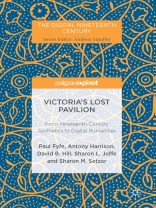This book explores the significance of the now-lost pavilion built in the Buckingham Palace Gardens in the time of Queen Victoria for understanding experiments in British art and architecture at the outset of the Victorian era. It introduces the curious history of the garden pavilion, its experimental contents, the controversies of its critical reception, and how it has been digitally remediated. The chapters discuss how the pavilion, decorated with frescos and encaustics by some of the most prominent painters of the mid-nineteenth century, became the center of a national conversation about an identity for British art, the capacity of its artists, and the quality of Royal and public taste.
Beyond an examination of the pavilion’s history, this book also introduces a digital model which restores the pavilion to virtual life, underscoring the importance of the pavilion for Victorian aesthetics and culture.
Содержание
.-Introduction Experiments from 19th-Century Aesthetics to Digital Humanities.-‘The Little Hot-Bed of Fresco Painting’: Queen Victoria’s Garden Pavilion at Buckingham Palace.- Architectural Histories and Virtual Reconstructions: Queen Victoria’s Lost Pavilion in Digital Space.- Contemporary Responses to the Garden Pavilion: “Perfect ‘Bijou’” or Royal Blunder?.- The Garden Pavilion: A Portal to Victorian Taste.- Radiant Virtuality.
Об авторе
The authors are part of an interdisciplinary team of researchers developing the project at North Carolina State University, including members from the Department of English, the College of Design, and the NCSU Libraries.












